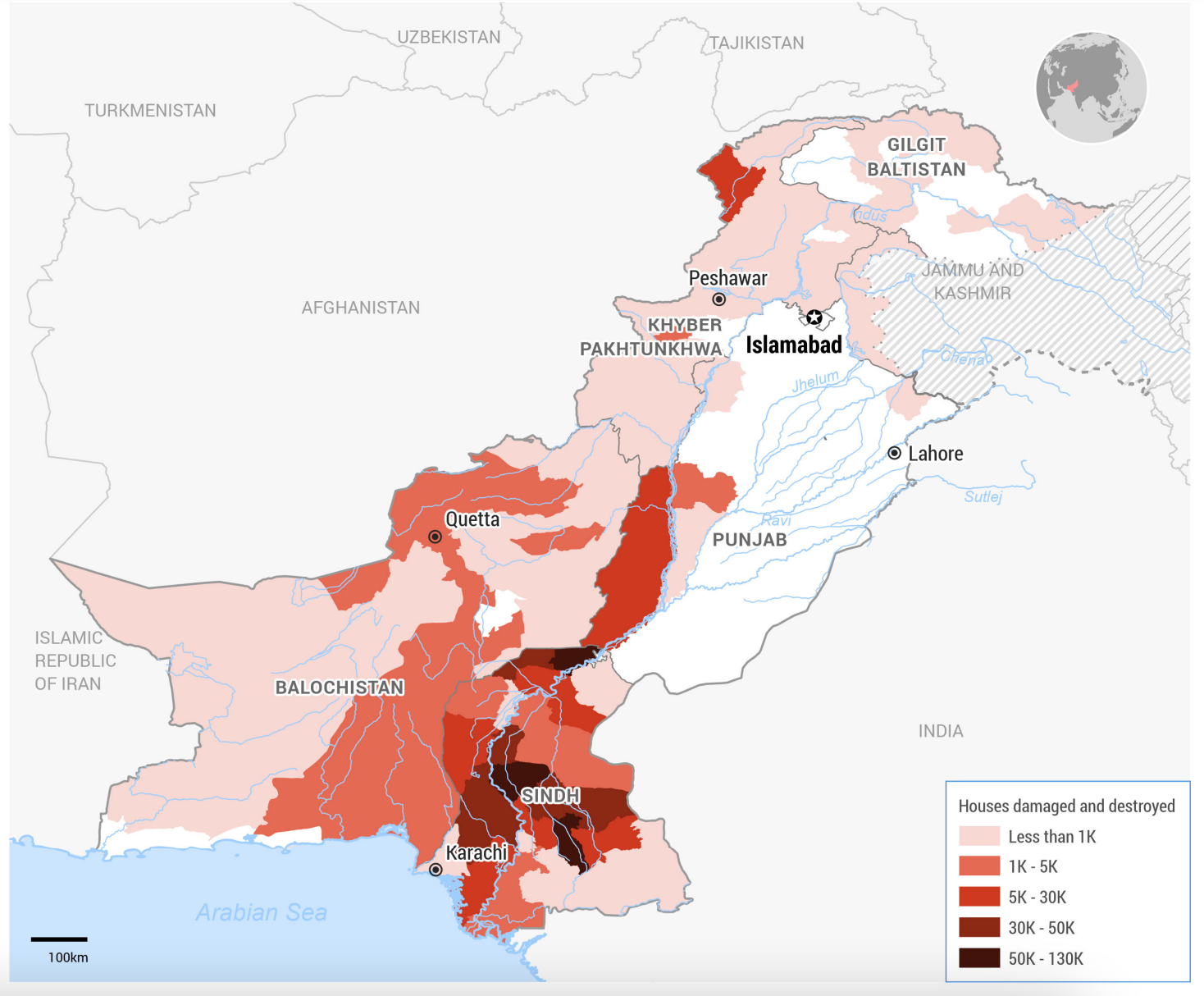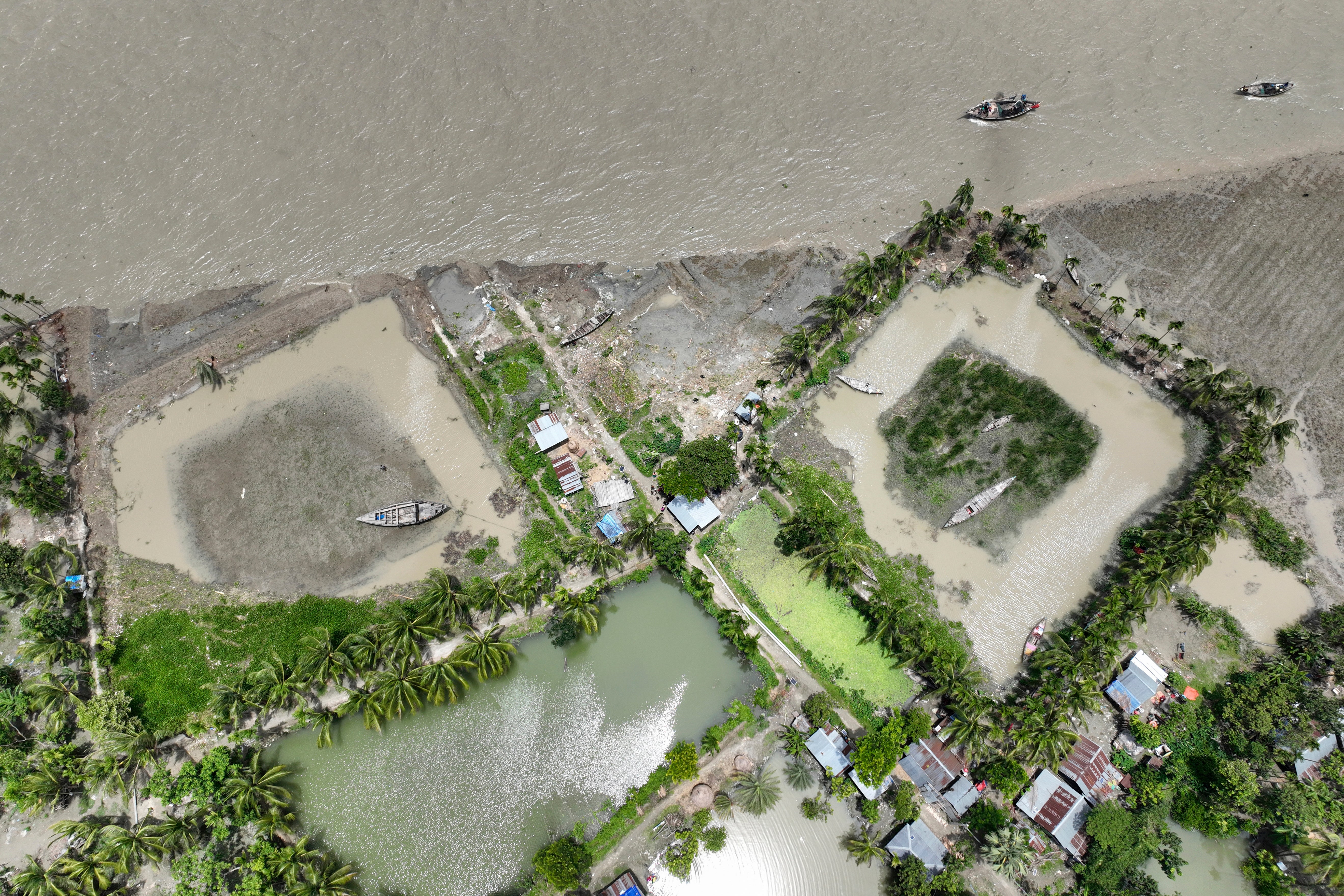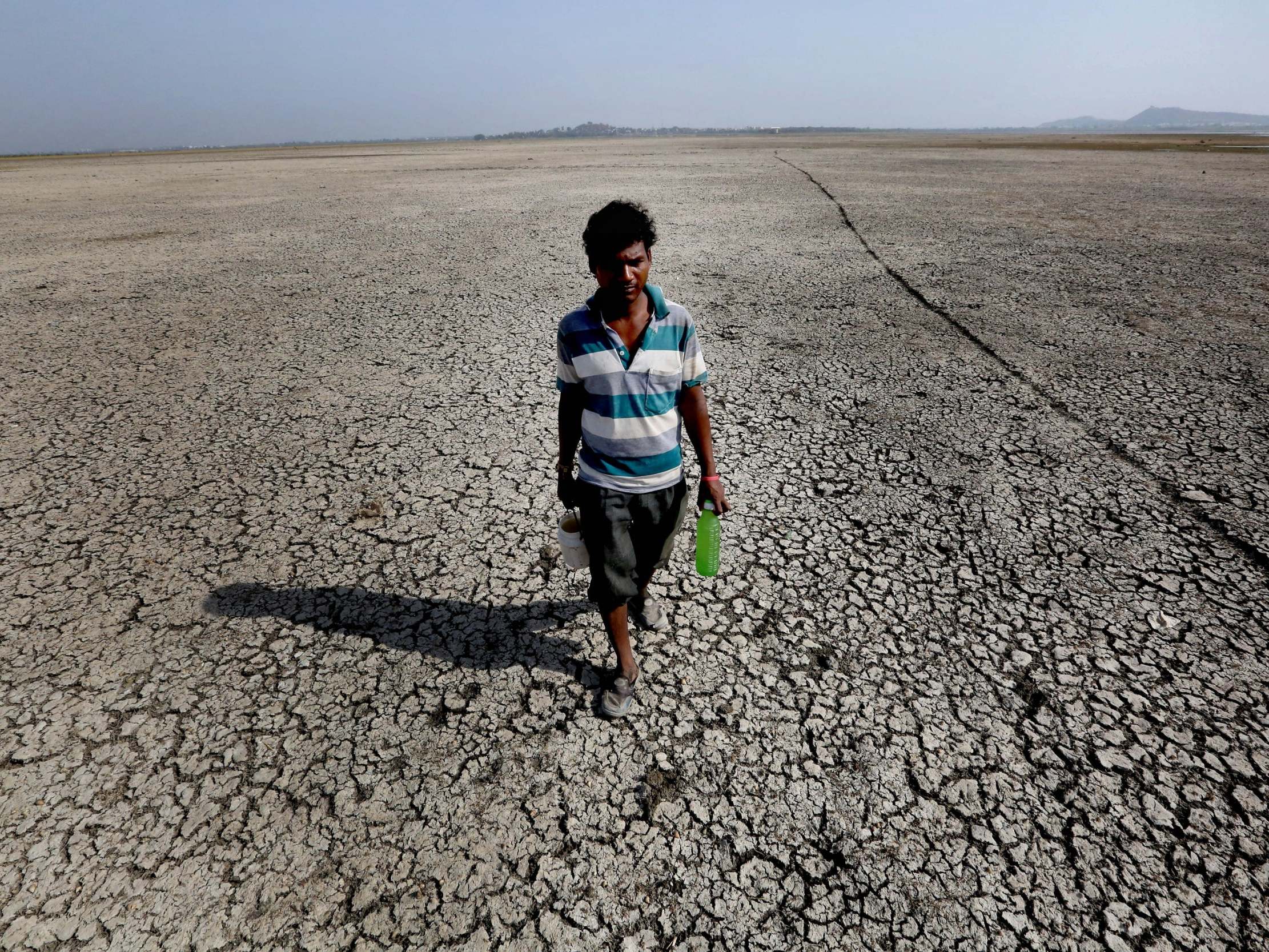South Asian nations facing extreme weather look to Cop27 - but will it deliver?
As the UN climate summit approaches, experts tell Stuti Mishra that global south will have to remind wealthy countries that the climate crisis is not something of their making
Your support helps us to tell the story
From reproductive rights to climate change to Big Tech, The Independent is on the ground when the story is developing. Whether it's investigating the financials of Elon Musk's pro-Trump PAC or producing our latest documentary, 'The A Word', which shines a light on the American women fighting for reproductive rights, we know how important it is to parse out the facts from the messaging.
At such a critical moment in US history, we need reporters on the ground. Your donation allows us to keep sending journalists to speak to both sides of the story.
The Independent is trusted by Americans across the entire political spectrum. And unlike many other quality news outlets, we choose not to lock Americans out of our reporting and analysis with paywalls. We believe quality journalism should be available to everyone, paid for by those who can afford it.
Your support makes all the difference.South Asian countries frequently facing devastating extreme weather events are increasingly looking to Cop27 and rich countries for more finance, seeking to remind them that they are not the ones to have caused the problem in the first place.
From record-breaking heatwaves and droughts to devastating floods, millions of people in south Asia have been suffering back-to-back extreme weather events on an unprecedented scale in the last few months.
Calls for reparations from wealthier countries have only grown as climate crisis-induced disasters like intensified heatwaves, drying rivers, raging wildfires and frequent storms are now impacting regions where such phenomena were at one time unprecedented.
Now as Cop27 approaches, world leaders will assemble yet again to negotiate how to combat the worsening climate crisis, while calls for increased global support to help victims are set to grow.
South Asia has always been especially vulnerable to more damage from these events compared to many other regions because of its geography, population and lack of climate-resilient infrastructure.
Millions of people in the region have been displaced due to disasters like floods damaging key infrastructures such as roads, schools and hospitals. Worsening heat has also posed severe challenges to the agriculture and energy sectors in the region.
Poorer countries which have limited ability to rebuild are forced to make hard choices: whether to spend the limited amount of resources they have on development or to promote climate resilience.
While people most exposed to the brunt of the climate crisis are those who are the least responsible for the problem, making the issue of climate reparations even more urgent and a matter of justice.
The stakes have become higher for the UN’s 27th climate summit, especially because international climate negotiations have so far failed miserably on the crucial issue of giving financial help to the global south to prepare for the rising challenges.
The negotiations around climate finance are set to be centred around two key areas.
One is the promised $100bn per year of climate finance to poor countries that wealthier nations pledged at the Cop15 summit in Copenhagen. But 13 years after that summit, the countries are still failing to fulfil their promise.
Experts say the sum is already minuscule of what is needed to help countries in the global south face worsening climate conditions, but there is little hope the wealthy nations will fulfil their promises ahead of Cop27.
Meanwhile, it is becoming increasingly clear that the impacts of the climate crisis are beyond what people can mitigate or adapt to. This brings a second key area, a new pot of money to compensate the victims of climate-crisis-induced disasters, termed “loss and damage”, in negotiations.
However, wealthier western countries, including the US, UK, Canada, Australia and most of the EU, have repeatedly resisted ambitious targets for climate finance and loss and damage. Last year’s Cop26 summit and the UN Bonn summit this year failed to provide any substantive progress on the issues.
But growing momentum from countries suffering through intensified disasters ahead of the Sharm-El-Shaikh summit may force wealthier nations to address the elephant in the room this year and bring a consensus on the issue of climate finance, even though experts say the signs are not in favour of this happening.
“The countries in the global south will have to remind richer countries that climate change is not our creation,” says Dr Anjal Prakash, research director and professor at Bharti Institute of Public Policy, who has worked on climate resilience in India and Bangladesh.
“The countries which have polluted the environment and promised to pay 100bn dollars have not been keeping their promise, and most of the time the money is coming as loans which poor countries are not able to pay,” he points out.
Countries like Pakistan, suffering from unprecedented floods, have already made it clear it is beyond their capacity to “cope with this magnitude of climate catastrophe on their own”. A third of Pakistan is currently at the risk of going underwater, climate minister Sherry Rehman has warned.
Floods in this year’s monsoon season have impacted over 33 million people and have killed over 1,000 in some of Pakistan’s most impoverished regions. While the country is only responsible for 0.8 per cent of the global emissions, it is one of the most vulnerable places on the planet for flood-related fatalities.
Also read: Pakistan floods: Stranded family saved after sliding on bed frame across water
“I haven’t seen destruction of this scale, I find it very difficult to put into words ... it is overwhelming,” Pakistan’s foreign minister Bilawal Bhutto-Zardari said on Sunday night describing the scenes in the wake of a deluge described as a “humanitarian disaster of epic proportions”.
“Obviously this will have an effect on the overall economic situation,” he said.

Similarly in Afghanistan, flooding has destroyed infrastructure like schools and hospitals, posing a long-term challenge for people already reeling under a humanitarian crisis.
Floods also washed away hundreds of houses as a large part of Afghanistan’s population suffering from poverty due to years of conflict lives in weak mud houses made with soil and stones that are prone to maximum damage in case of any disasters.
“We are now seeing extreme weather hit areas of Afghanistan and wider South Asia including Bangladesh, Pakistan and India. The impacts have been devastating and it is imperative to acknowledge that the climate crisis is threatening the lives of the least responsible,” Shazia Arshad, head of communications for Islamic Relief UK tells The Independent.
“The international community has a duty to not turn its back on the people of Afghanistan. With an exacerbating economic crisis and sanctioned access to funds, the climate emergency will occur as a recurring challenge beyond the country’s capacity to cope.”
In Bangladesh, a densely populated delta nation which is one of the most flood-prone areas in the world and only responsible for 0.48 per cent of the total emissions, rainfall began much earlier this year leading to even more frequent floods in its northern and central areas, impacting over seven million people.
“The variability of rainfall and severity of events is increasing and these are very clearly climate crisis-induced events,” Dr Prakash says, adding that people in several regions which were so far safe from such events were caught off-guard.
“This is a very unfortunate situation because countries like Bangladesh, Nepal, Bhutan have done a lot in terms of preparing for climate adaptation,” Ulka Kelkar, director of World Resources Institute’s climate programme tells The Independent.
“Many of these countries are putting in a lot of their own money. However, beyond a point, if climate events become more extreme, or more severe, or more frequent, occurring more and more frequently, there’s a limit to how much people can cope with even if you have community preparedness.”

Parts of India’s northeastern regions have also been frequently inundated in the last couple of months, impacting over a million people. Meanwhile, large swathes of agrarian states suffer through droughts after an intense period of deadly heatwaves which have become 30 times more likely in India and Pakistan, according to data from World Weather Attribution.
Nearly two-thirds of the country has suffered through droughts in the last two years, government data shows. India’s drought-prone area has increased by 57 per cent since 1997. Over the last decade, a third of the districts of the agriculture-reliant country have experienced more than four droughts.
The country is projected to have three per cent less production of wheat this year and was forced to halt exports of the key crop earlier, facing international criticism amid a global food shortage sparked by the Ukraine invasion.
While India is the third-largest polluter now, it is also a country with limited means and needs funds to pull its population out of poverty. Repeated disasters threatening its key sectors are posing a risk to the country’s economic security and forcing it to speed up climate resilience plans at the cost of ignoring developmental goals, experts say.

Explaining one such challenge, Ms Kelkar says, that the energy transition developing countries were supposed to go through over a decade has become an immediate goal with the worsening climate, making climate action and in turn climate finance a lot more urgent.
“Climate action, both on the mitigation side and adaptation side has become a very immediate priority, and both require finance whether it is transitioning away from fossil fuels energy or recovering from disasters,” she says.
“But it’s very unlikely that the target can be met before 2023.”
Experts are now demanding the country raise the issue of risk to its food security at the Cop27 summit. Indian prime minister Narendra Modi already said during last year’s Cop26 summit that wealthier nations should pay a trillion dollars in climate finance.
It is expected that India will follow through with its demand more strongly now, as it sets more ambitious climate action targets as part of its updated Nationally Determined Contributions (NDCs).
Green investment in the country has already been falling far short to fulfil the climate targets, which a recent study by the Climate Policy Initiative (CPI) revealed. It estimates that for India to achieve its new goals, the country requires an approximate £1 trillion per year.
Scientists have repeatedly warned that the combined impact of worsening seasons that the region is facing at the current warming of 1.1C is set to get worse in the coming years. This could be true even if all countries manage to deliver on their climate action goals aimed at limiting global warming to 2C in line with the landmark 2015 Paris agreement.
But if the countries manage to put a united front forward, the voice of vulnerable nations may be able to bring an effective change in the narrative this time.







Join our commenting forum
Join thought-provoking conversations, follow other Independent readers and see their replies
Comments